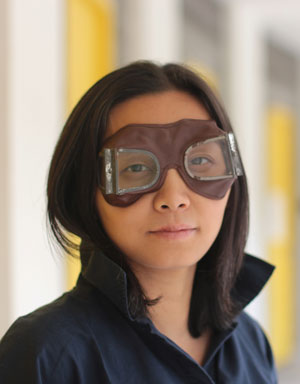INTERVIEW: WANG RUOBING
Wang Ruobing is an artist, independent curator and art educator based in Singapore. She received her Doctor of Philosophy from the University of Oxford, United Kingdom. She was previously a curator at the National Gallery Singapore. At present, she works as a lecturer at LASALLE College of the Arts and is the co-founder of Comma Space 逗号空间: an artist-run experimental art space that creates thinking spaces between commas. As an independent curator, her recent curated exhibitions include 12 SOLO (2020 -2021, ongoing); Arts in Your Neighbourhood (Public Art Trust 2018 and 2019); Happens When Nothing Happens (The Esplanade, 2019); Of Other Places (The Substation, 2019); and Beneath Tide, Running Forest (Singapore Botanic Gardens, 2018).
How did you start curating, and how do you define your curatorial work?
For artists, curating is in a way always being practised within their personal studio creation, in the contexts of selection of the artworks, titling and use of space, and so on.
For me, curating the works of others was triggered in 2002 by the incident of a 150-year-old Hopea sangal tree, which stood 35m tall in Changi, and was illegally chopped down by property management company DTZ Debenham Tie Leung. The incident demonstrated how little the public understood nature conservation. While working voluntarily at the Sculpture Society Singapore at that time, the society’s ex-president Han Sai Por and I felt there was something that us artists could do to help raise the concern and create dialogical space with our art. We managed to obtain the tree trunks and work with other local artists to transform them into nine pieces of sculptures, which are currently housed at the Zoo. This is how I fell in love with curating, knowing it can be instrumental in creating meaning, activating ideas and provoke thinking.
You have an artistic practice as well as a curatorial one. How does your artistic practice influence your curation, and vice versa?
In my view, being an artist-curator is a privilege. With informed studio-practice, artists bring their experiences as a maker, creator to the process of curating. I think through curating, which is, to a certain extent, similar to my thinking through making as an artist. The hybrid roles mutually inform and shape my own practices as well as exhibition making.
What do you look out for in a curatorial proposal?
Honesty, clarity, idea, passion for art and care for the proposed artworks without which the exhibition could not exist.
Read our interview with fellow advisor Marc Glöde here.
Apply for Curator Open Call here.
Deadline: 8 March 2021

